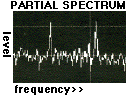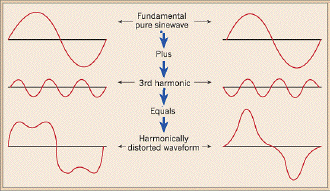
 Technical
notes index
Technical
notes index
Principles of audio noise reduction
page 1 next page>>
CONTENTS
1. INTRODUCTION
Distortion
Frequency response
Pitch errors
Noise
2. FIXED PITCH NOISE
3. IMPULSIVE NOISE
4. RANDOM NOISE (HISS)
5. HISS REDUCTION
Examples
Companders
6. NOISE REDUCTION EXAMPLES
The principal problems which can affect analogue sound recordings are distortion, incorrect frequency response, pitch errors, and noise. Since this article is concerned with noise the first three are discussed only briefly below: a more detailed article specifically on the reproduction of 78rpm records is posted here.
The
most familiar form of distortion
is common in amateur recordings:
overloading the recording system so that loud parts of the audio are
clipped. Once this has happened there is little that can be done about
it. This fault is rarely present in professional recordings, but more
general harmonic distortion can occur in amplifying systems, leading to
additional frequencies being added to the sound - usually an octave or
an octave and-a-half above the original. The former is not too serious
if it is at a low level, the latter far more so: again, little can be
done about it.
Usually
occurring in the form of too little of the higher frequencies, this can
be caused by deterioration of the recorded media, or by incorrect
equalization - gramophone records in particular were not recorded
'flat' for technical reasons (see this
note for a detailed explanation) and a wide range of
different equalization curves were used over
the period they were in
common use. Adjusting this is a relatively simple matter, but if it's
necessary to boost the top, the noise usually comes up with it.
 Noise takes three main forms:
impulsive, fixed frequency, and random. Impulsive noise is clicks and
plops, most commonly caused by damage to gramophone records, but also
by electrical interference when tape recordings are being made (though
the latter is not usually a problem in professional studios). 78rpm
records suffer not only from clicks - usually scratches - but crackle:
in effect many continuous closely-spaced clicks usually caused by the
abrasive filler placed in the 78rpm shellac during manufacture to grind
the needle down to fit the groove shape.
Noise takes three main forms:
impulsive, fixed frequency, and random. Impulsive noise is clicks and
plops, most commonly caused by damage to gramophone records, but also
by electrical interference when tape recordings are being made (though
the latter is not usually a problem in professional studios). 78rpm
records suffer not only from clicks - usually scratches - but crackle:
in effect many continuous closely-spaced clicks usually caused by the
abrasive filler placed in the 78rpm shellac during manufacture to grind
the needle down to fit the groove shape.
 Fixed frequency noise
takes the form of hum - usually induction from the mains supply - or,
if at a higher frequency, whistles: this is common on recordings made
from AM
radio, but 78rpm records
sometimes suffer from 'swarf whistle'
as the off-cut from the blank disk scrapes past the cutting stylus. As
this reduces in frequency towards the centre of the disk (where the
linear speed is slower) it is extremely difficult to eradicate.
Fixed frequency noise
takes the form of hum - usually induction from the mains supply - or,
if at a higher frequency, whistles: this is common on recordings made
from AM
radio, but 78rpm records
sometimes suffer from 'swarf whistle'
as the off-cut from the blank disk scrapes past the cutting stylus. As
this reduces in frequency towards the centre of the disk (where the
linear speed is slower) it is extremely difficult to eradicate.
Random noise usually takes the form of hiss: tape hiss is caused by the random placement of the magnetic particles in the recording tape, and was a problem which became less severe as years progressed and both the media and the methods for recording on it were improved. Microphone amplifiers can also produce audible hiss, though again modern systems don't suffer audibly from this. In the case of 78s efficient crackle removal still leaves residual hiss, usually at quite a high level. Low-frequency noise - rumble - can be caused by poor bearings on gramophone turntables (or the original disk-cutter), or by external sounds such as ventilation, traffic, or passing underground trains - the latter affected several famous recording venues, but in many cases only modern wide-range playback systems show it up.
The next page and those following deal with the various types of noise and its reduction.
1. INTRODUCTION
Distortion
Frequency response
Pitch errors
Noise
2. FIXED PITCH NOISE
3. IMPULSIVE NOISE
4. RANDOM NOISE (HISS)
5. HISS REDUCTION
Examples
Companders
6. NOISE REDUCTION EXAMPLES
Introduction
All sound recordings can suffer from faults, though modern recording practice minimises most of them to the point where they aren't a problem. However in the restoration of old (mostly analogue) recordings there are a number of faults which are normal in recordings: the restoration process involves trying to eliminate or at least reduce them. This article deals with analogue recordings: uncompressed digital recordings by their nature tend to either be full quality or not work at all, while MP3 and other digitally compressed recordings introduce their own set of interesting artefacts. The article is spread across six pages and includes some brief examples: these are best listened to on wide-range speakers - the effects may not be so obvious on small computer speakers.The principal problems which can affect analogue sound recordings are distortion, incorrect frequency response, pitch errors, and noise. Since this article is concerned with noise the first three are discussed only briefly below: a more detailed article specifically on the reproduction of 78rpm records is posted here.
 Distortion
Distortion
The
most familiar form of distortion
is common in amateur recordings:
overloading the recording system so that loud parts of the audio are
clipped. Once this has happened there is little that can be done about
it. This fault is rarely present in professional recordings, but more
general harmonic distortion can occur in amplifying systems, leading to
additional frequencies being added to the sound - usually an octave or
an octave and-a-half above the original. The former is not too serious
if it is at a low level, the latter far more so: again, little can be
done about it.Frequency response
Pitch errors
These can be continuous, where a recording is simply being played at the wrong speed; or cyclical - 'wow' (slow regular variations, such as a gramophone record with on off-centre hole) or 'flutter' (rapid variations, usually a fault on tape recordings). The former is, obviously, simple to correct - simply adjust the playback speed: but wow and flutter are almost impossible to eradicate (where the wow is caused by an off-centre hole in a gramophone record the usual approach is to enlarge the hole with a reamer and then align the record manually until it's centred... not easy).Noise
Noise is the main bugbear of sound recording, and over the years various methods have been applied to combat it - most famously the various Dolby systems for tape and film soundtracks, where the signal is processed during recording, and de-processed during playback, in a way designed to reduce noise. Noise takes three main forms:
impulsive, fixed frequency, and random. Impulsive noise is clicks and
plops, most commonly caused by damage to gramophone records, but also
by electrical interference when tape recordings are being made (though
the latter is not usually a problem in professional studios). 78rpm
records suffer not only from clicks - usually scratches - but crackle:
in effect many continuous closely-spaced clicks usually caused by the
abrasive filler placed in the 78rpm shellac during manufacture to grind
the needle down to fit the groove shape.
Noise takes three main forms:
impulsive, fixed frequency, and random. Impulsive noise is clicks and
plops, most commonly caused by damage to gramophone records, but also
by electrical interference when tape recordings are being made (though
the latter is not usually a problem in professional studios). 78rpm
records suffer not only from clicks - usually scratches - but crackle:
in effect many continuous closely-spaced clicks usually caused by the
abrasive filler placed in the 78rpm shellac during manufacture to grind
the needle down to fit the groove shape. Fixed frequency noise
takes the form of hum - usually induction from the mains supply - or,
if at a higher frequency, whistles: this is common on recordings made
from AM
radio, but 78rpm records
sometimes suffer from 'swarf whistle'
as the off-cut from the blank disk scrapes past the cutting stylus. As
this reduces in frequency towards the centre of the disk (where the
linear speed is slower) it is extremely difficult to eradicate.
Fixed frequency noise
takes the form of hum - usually induction from the mains supply - or,
if at a higher frequency, whistles: this is common on recordings made
from AM
radio, but 78rpm records
sometimes suffer from 'swarf whistle'
as the off-cut from the blank disk scrapes past the cutting stylus. As
this reduces in frequency towards the centre of the disk (where the
linear speed is slower) it is extremely difficult to eradicate.Random noise usually takes the form of hiss: tape hiss is caused by the random placement of the magnetic particles in the recording tape, and was a problem which became less severe as years progressed and both the media and the methods for recording on it were improved. Microphone amplifiers can also produce audible hiss, though again modern systems don't suffer audibly from this. In the case of 78s efficient crackle removal still leaves residual hiss, usually at quite a high level. Low-frequency noise - rumble - can be caused by poor bearings on gramophone turntables (or the original disk-cutter), or by external sounds such as ventilation, traffic, or passing underground trains - the latter affected several famous recording venues, but in many cases only modern wide-range playback systems show it up.
The next page and those following deal with the various types of noise and its reduction.